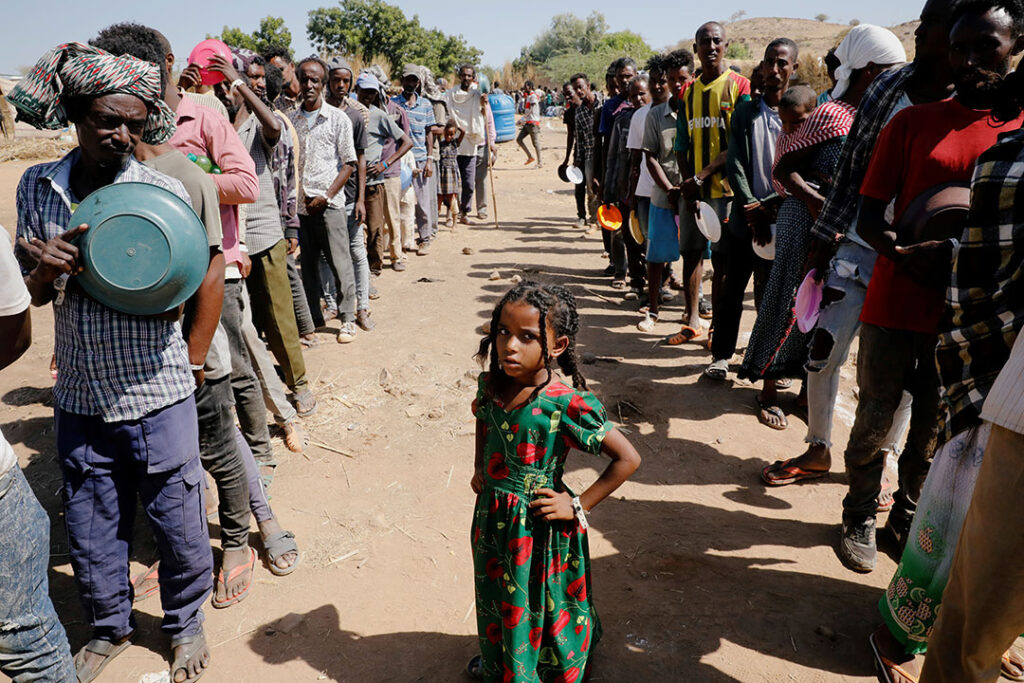ADF STAFF
In recent weeks, the world has seen shocking images coming out of Ethiopia. Refugees streaming across the border into Sudan. Tanks preparing to shell strategic targets in Mekelle, the largest city in the country’s north. Regional forces vowing to fight the federal government to the bitter end. A nation on the brink of civil war.
So, how did it come to this? As Africa’s second-most-populous nation and one of the largest troop contributors to peacekeeping missions around the world, Ethiopia has long been a pillar of stability.
“Ethiopia is the anchor state of the Horn of Africa,” Murithi Mutiga, International Crisis Group’s Horn of Africa project director, told Voice of America. “As one diplomat pithily put it: ‘If there was a major internal crisis within Ethiopia, it would not implode inwards. It would explode outwards.’”
The conflict between the Tigrayan People’s Liberation Front (TPLF), the political party in the country’s far north, and the federal government based in Addis Ababa has been decades in the making. TPLF fighters helped overthrow the brutal Derg regime in 1991. After the liberation, Prime Minister Meles Zenawi, a Tigrayan ex-fighter, led a coalition government for more than 20 years. Although Tigrayans make up only 6% of the population, they enjoyed outsized power during this time.
“The TPLF’s political and military power eventually gave rise to economic dominance,” wrote scholar Kassahun Melesse in Foreign Policy. “It enabled its leaders to exercise complete control of the country’s economy and natural resources.”
Tensions have increased since Abiy Ahmed, a young reformer from the Oromo ethnic group, became prime minister in 2018. Earlier this year Abiy dissolved the ruling political party, the EPRDF, and created the Prosperity Party, which the TPLF refused to join.
In September, Tigray held regional elections against federal government orders. Abiy called the elections “illegal,” and his minister in charge of democratization said “the TPLF crossed a red line.”
The conflict escalated further in early November when the federal government accused TPLF fighters of raiding a military base to steal weapons.
The ensuing conflict has included aerial bombardment and shelling. More than 43,000 people fled the fighting into Sudan. On November 28, after surrounding Mekelle, the Ethiopian National Defense Force retook the city, including an airport and a military base. Although Ethiopian forces said they used precision strikes to avoid civilian casualties, a widespread blackout of internet and telecommunications made verification impossible.
Analysts say the conflict is a result of a perilous transition period as Abiy seeks to institute reforms while various regional forces and ethnic groups jockey for control and try to protect what they have.
“This conflict is about power,” said Zach Vertin, a nonresident fellow at the Brookings Institution. “It’s about economics, and it’s about competing visions for the Ethiopian state. It’s about balancing stability and democratization, ethnic loyalties, and national identity. It’s about a tension between the old status quo and a desire for change.”
Leaders across the continent want to avoid further unrest. A group of three former heads of state, including a former Liberian president and Nobel Peace Prize laureate, Ellen Johnson Sirleaf, traveled to the country to try to mediate. Abiy met with the group but has refused to negotiate directly with the TPLF. The world is anxiously watching for the next development.
“With a country of 110 million people it has often been said that Ethiopia is too big to fail,” Vertin said. “Not only could this conflict spread to other parts of Ethiopia; — this conflict threatens the Horn of Africa as a whole and the wider Red Sea region.”

